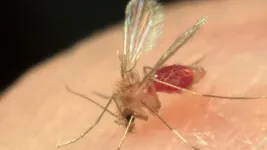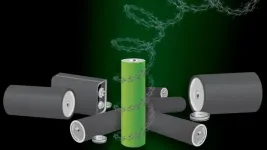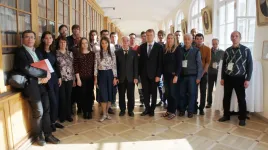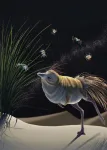Organ transplant recipients remain vulnerable to COVID-19 even after second vaccine dose
Johns Hopkins Medicine researchers urge people who are immunocompromised to strictly follow COVID-19 safety measures, even after vaccination
2021-05-06
(Press-News.org) In a study published today in the Journal of the American Medical Association (JAMA), Johns Hopkins Medicine researchers show that although two doses of a vaccine against SARS-CoV-2 -- the virus that causes COVID 19 -- confers some protection for people who have received solid organ transplants, it's still not enough to enable them to dispense with masks, physical distancing and other safety measures.
This is a follow-up study to an earlier one published in March in JAMA, in which the researchers reported that only 17% of the participating transplant recipients produced sufficient antibodies after just one dose of a two-dose COVID-19 vaccine regimen.
"While there was an increase in those with detectable antibodies -- 54% overall -- after the second shot, the number of transplant recipients in our second study whose antibody levels reached high enough levels to ward off a SARS-CoV-2 infection was still well below what's typically seen in people with healthy immune systems," says study lead author Brian Boyarsky, M.D., a surgery resident at the Johns Hopkins University School of Medicine.
"Based on our findings, we recommend that transplant recipients and other immunocompromised patients continue to practice strict COVID-19 safety precautions, even after vaccination," Boyarsky says.
People who receive solid organ transplants (such as hearts, lungs and kidneys) often must take drugs to suppress their immune systems and prevent rejection. Such regimens may interfere with a transplant recipient's ability to make antibodies to foreign substances, including the protective ones produced in response to vaccines.
The new study evaluated this immunogenic response following the second dose of either of the two messenger RNA (mRNA) vaccines -- made by Moderna and Pfizer-BioNTech -- for 658 transplant recipients, none of whom had a prior diagnosis of COVID-19. The participants completed their two-dose regimen between Dec. 16, 2020, and March 13, 2021.
In the most recent study, the researchers found that only 98 of the 658 study participants -- 15% -- had detectable antibodies to SARS-CoV-2 at 21 days after the first vaccine dose. This was comparable to the 17% reported in the March study looking at immune response after only one vaccine dose.
At 29 days following the second dose, the number of participants with detectable antibodies rose to 357 out of 658 -- 54%. After both vaccine doses were administered, 301 out of 658 participants -- 46% -- had no detectable antibody at all while 259 -- 39% -- only produced antibodies after the second shot.
The researchers also found that among the participants, the most likely to develop an antibody response were younger, did not take immunosuppressive regimens including anti-metabolite drugs and received the Moderna vaccine. These were similar to the associations seen in the March single-dose study.
"Given these observations, transplant recipients should not assume that two vaccine doses guarantee sufficient immunity against SARS-CoV-2 any more than it did after just one dose," says study co-author Dorry Segev, M.D., Ph.D., the Marjory K. and Thomas Pozefsky Professor of Surgery and Epidemiology and director of the Epidemiology Research Group in Organ Transplantation at the Johns Hopkins University School of Medicine.
Segev says that future studies should seek to improve COVID-19 vaccine responses in this population, including additional booster doses or modulating the use of immunosuppressive medications so that sufficient antibody levels are achieved.
INFORMATION:
In addition to Boyarsky and Segev, the Johns Hopkins Medicine research team includes William Werbel, Robin Avery, Aaron Tobian, Allan Massie and Jacqueline Garonzik-Wang.
The study was supported by a donation from the Ben-Dov family; grants F32DK124941, K01DK10677 and K23DK115908 from the National Institute of Diabetes and Digestive Kidney Diseases; grant K24AI144954 from the National Institute of Allergy and Infectious Diseases; and grant gSAN-201C0WW from the Transplantation and Immunology Research Network of the American Society of Transplantation.
None of the authors have any financial disclosures or conflicts of interest related to this study.
[Attachments] See images for this press release:
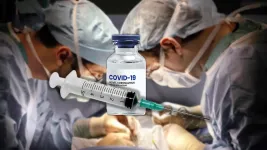
ELSE PRESS RELEASES FROM THIS DATE:
2021-05-06
Loneliness and social isolation have been significant problems for the general population during the COVID-19 pandemic, but for cancer patients these issues were particularly acute, likely due to isolation and social distancing, according to a new UCSF study.
The study, which is the first to evaluate loneliness, anxiety, depression, fatigue and other symptoms in a single group of patients, is published in Cancer, a peer-reviewed journal of the American Cancer Society.
"We found that oncology patients were experiencing a deep sense of loneliness," ...
2021-05-06
Researchers at North Carolina State University and the University of North Carolina Greensboro made a surprising finding while examining areas where sand flies rear their young: a new species of bacteria that is highly attractive to pregnant, or gravid, sand flies. The findings could advance the production of ecologically safe baits or traps to reduce sand fly populations.
Sand flies are vectors for important parasitic diseases affecting people in tropical and subtropical regions in Asia, Africa and the Middle East. One of those diseases is Leishmaniasis, which generally causes ...
2021-05-06
HOUSTON - (May 6, 2021) - A Rice University laboratory has adapted its laser-induced graphene technique to make high-resolution, micron-scale patterns of the conductive material for consumer electronics and other applications.
Laser-induced graphene (LIG), introduced in 2014 by Rice chemist James Tour, involves burning away everything that isn't carbon from polymers or other materials, leaving the carbon atoms to reconfigure themselves into films of characteristic hexagonal graphene.
The process employs a commercial laser that "writes" graphene patterns into surfaces that to date have included wood, paper and even food.
The new iteration writes fine patterns of graphene into photoresist polymers, light-sensitive materials used in photolithography and ...
2021-05-06
As the human body's largest organ, the skin is responsible for protecting against a wide range of possible infections on all fleshy surfaces, from head to toe. So how exactly does the skin organize its defenses against such an array of threats?
A new Yale study shows that the epidermis, the outermost layer of skin, is comprised of an army of immune cells that station themselves at regular intervals across the skin's vast expanse to resist infection. When necessary, the researchers found, these immune system soldiers are able to reposition themselves to protect vulnerable areas.
The study, published in the journal Nature Cell Biology, was conducted by the lab of Valentina ...
2021-05-06
The introduction of lithium-ion (Li-ion) batteries has revolutionized technology as a whole, leading to major advances in consumer goods across nearly all sectors. Battery-powered devices have become ubiquitous across the world. While the availability of technology is generally a good thing, the rapid growth has led directly to several key ethical and environmental issues surrounding the use of Li-ion batteries.
Current Li-ion batteries utilize significant amounts of cobalt, which in several well-documented international cases is mined using child labor in dangerous working ...
2021-05-06
The idea of creating quantum computers has long captured the minds of researchers and experts of IT corporations. They are the most powerful computers operating according to the laws of the quantum world and capable of solving many problems more efficiently than the most productive classical supercomputers. Similar developments are underway, for example, at Google and IBM. However, many such projects require the use of cryostats. These are vessels with liquid nitrogen or compressed helium, inside which quantum processors are cooled to temperatures below -270°C. Such a low temperature is required to maintain the superconductivity effect, which is necessary for the operation ...
2021-05-06
Today's 10,000 species of birds live in virtually every habitat on Earth, but only a handful have adaptations enabling them to hunt active prey in the dark of night. Scientists have long wondered whether theropod dinosaurs - the group that gave rise to modern birds - had similar sensory adaptations.
A new study led by University of the Witwatersrand scientist, Professor Jonah Choiniere, sought to investigate how vision and hearing abilities of dinosaurs and birds compared. The international team of researchers used CT scanning and detailed measurements to collect information ...
2021-05-06
New Haven, Conn. -- If paleontologists had a wish list, it would almost certainly include insights into two particular phenomena: how dinosaurs interacted with each other and how they began to fly.
The problem is, using fossils to deduce such behavior is a tricky business. But a new, Yale-led study offers a promising entry point -- the inner ear of an ancient reptile.
According to the study, the shape of the inner ear offers reliable signs as to whether an animal soared gracefully through the air, flew only fitfully, walked on the ground, or sometimes went swimming. In some cases, the inner ear even indicates whether ...
2021-05-06
The findings, published in the journal Science today, demonstrate how integrating vertical descent and horizontal gene transfer can be used to infer the root of the bacterial tree and the nature of the last bacterial common ancestor.
Bacteria comprise a very diverse domain of single-celled organisms that can be found almost everywhere on Earth. All Bacteria are related and derive from a common ancestral Bacterial cell. Until now, the shape of the bacterial tree of life and the placement of its root has been contested, but is necessary to shed light on the early evolution of life on our ...
2021-05-06
The uncertainty principle, first introduced by Werner Heisenberg in the late 1920's, is a fundamental concept of quantum mechanics. In the quantum world, particles like the electrons that power all electrical product can also behave like waves. As a result, particles cannot have a well-defined position and momentum simultaneously. For instance, measuring the momentum of a particle leads to a disturbance of position, and therefore the position cannot be precisely defined.
In recent research, published in Science, a team led by Prof. Mika Sillanpää at Aalto University in Finland has shown that there is a way to get around ...
LAST 30 PRESS RELEASES:
[Press-News.org] Organ transplant recipients remain vulnerable to COVID-19 even after second vaccine dose
Johns Hopkins Medicine researchers urge people who are immunocompromised to strictly follow COVID-19 safety measures, even after vaccination

